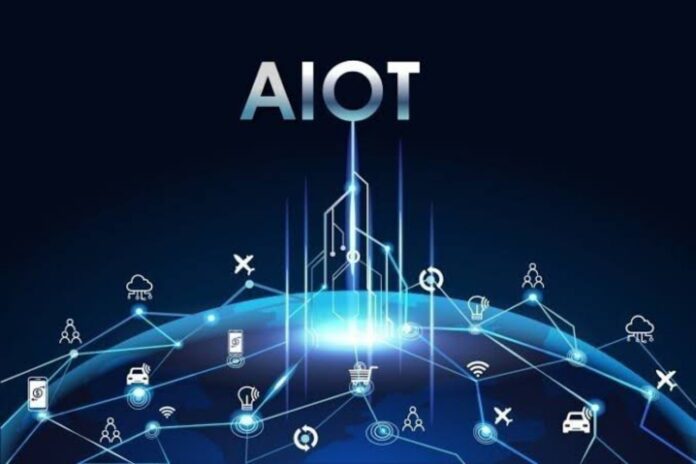The world is now changing around technology. As the environment is changing, the increasing reliance of humans on technology can be seen. Especially in organizations and companies where the transition of technology, facilities, and business models is seen as a long-term necessity move.
The Internet-of-Things (IoT) is one such innovation that has been in the front runner and the future change-maker in the industrial system. Experts assume that IoT is the guiding power that can redefine Business 4.0. Integrating IoT, with artificial intelligence, thereby creating a convergence known as AIoT would redefine organizational change. Gartner’s study reports that by 2022, more than 80 percent of the businesses will deploy AI with IoT.
The AIoT offers a forum for optimizing the market model, increasing productivity, satisfying growing demand, and instilling improved consumer service. Although IoT is known as the spinal cord of all AIoT operations, experts have defined AI as the brain of IoT, thereby governing all operations.
AIoT is a special fusion of Artificial Intelligence (AI) and the Internet of Things. The IoT has data or telemetry detectors that are controlled by cloud computing. Telemetry data is submitted to the cloud, which holds vast databases and observations. Thus, information, networking, and computation form the backbone of IoT, and gathering a huge number of databases, storing them in portable storage structures, analyzing massive data to provide insights, using this analysis for rich visualizations, and managing the machines with the insights given by the Big Data Analysis are the strengths of IoT.
Juniper Research’s study estimates that IoT-connected devices will triple to about 38 billion by 2020. Integrating AI with IoT provides more opportunity to fix the system’s deficiencies or weaknesses. AI analyses the trends with the telemetry details recognizes the holes that obstruct the automation process and then proceeds to take an intervention. Thus, unlike IoT, which only responds to the device void, AIoT analyses the pattern of telemetry data, increases it, and produces a solution that can diagnose and self-cure failures.
Manufacturing with AIoT
There has been a change from the conventional production paradigm to the modern manufacturing process, which facilitates completely automated plants. According to the World Economic Forum report, more than 1,000 factories have entered into the transition phase with AIoT, which analysts have noted, growing production rates, mass customization, and ensure that sustainable products can be obtained for the effective running of business models.
Sensors that are incorporated in factory devices, such as remote sensors and smart meters, collect telemetry data. Installing these devices with AIot, encouraging the review of data and the detection of the discrepancy within the production model in factories and plants, and thereby fixing the problem, without relying on the external source. Such a strategy enables the rapid delivery of goods to the consumer, effective manufacturing and increased process efficiency, better corporate productivity, and improved customer service.
Through reviewing telemetry results, insights can be drawn into customer satisfaction and experience, the gap that needs to be filled and the methods used to fix these gaps. In comparison, unlike the conventional manufacturing model, with the use of AIoT, production workers are presented with details on decision support that must be made to ensure smart production.
Automobile Industry with AIoT
The buzz of smart cars uses technology such as IoT, where sensors are installed for recording, saving, and attaching data to multiple devices. Increased telemetry data with AIoT allows to access data that not only enables smart cars to detect blockages, road conditions, or internal problems but also to respond by self-controlling the movement of the vehicle, retaining the speed of the car, and adjusting the route of the car, as and when necessary. Mckinsey Insight’s study notes that 15 percent of vehicles will be self-sufficient by 2030, using technology such as IoT.
Agriculture with AIoT:
In agriculture, the identification of climate conditions, the tracking of crops, and the identification of pests are important for improved production yields. With the help of AIoT, a method can be used in agricultural plants where the data will be gathered, by tracking crops to detect any pest damage or failure that causes the crop to wilt and suffer.
Healthcare with AIoT:
Healthcare is now incorporating automation and artificial intelligence to ensure that better healthcare outcomes are provided to the consumer. Through incorporating AIoT in surgical robots, robots would not only be able to recognize the problems involved with surgery, but the AI would also allow them to interpret and use telemetry data during delicate surgery.
In other aspects of health care, too, the AIoT will help to connect various medical instruments, analyze patient health data, and evaluate the nature of every illness on that basis. Therefore, the use of AIoT in both industries is seen to be revolutionized by AIoT. When strategically implemented, AIoT can be used by companies for cost-effective and successful operations.

